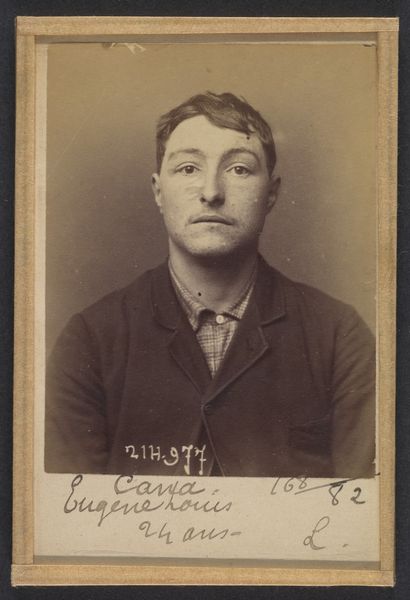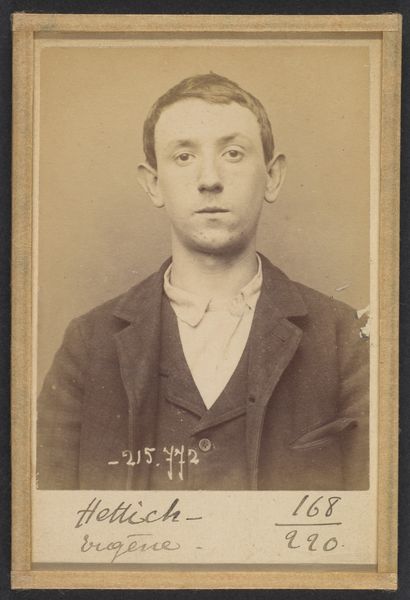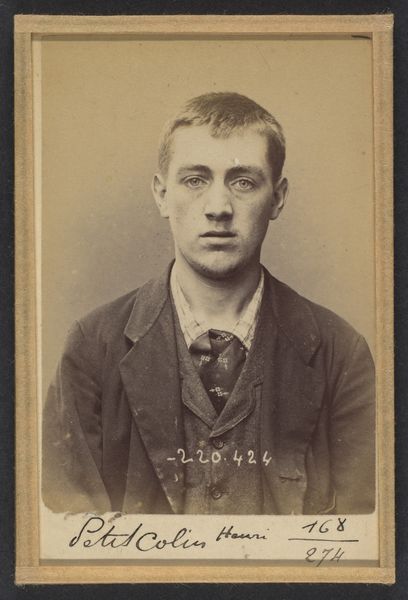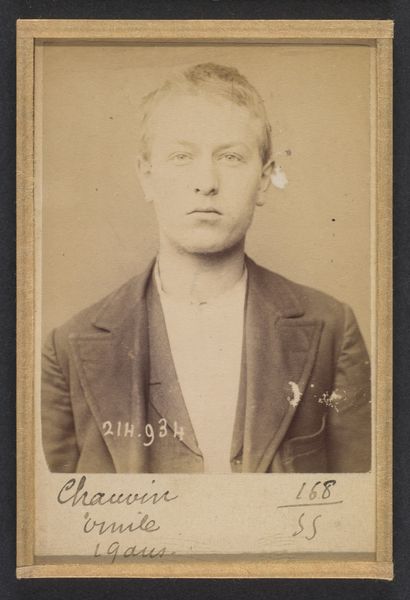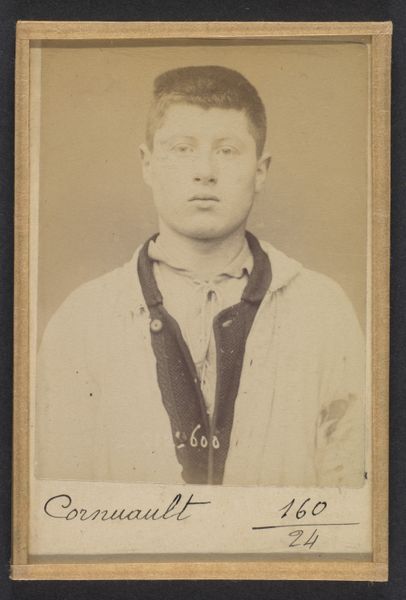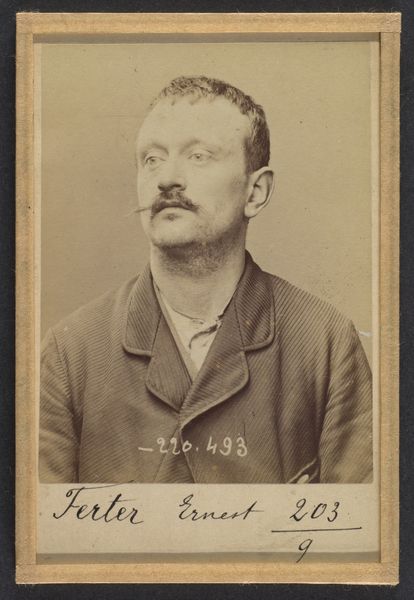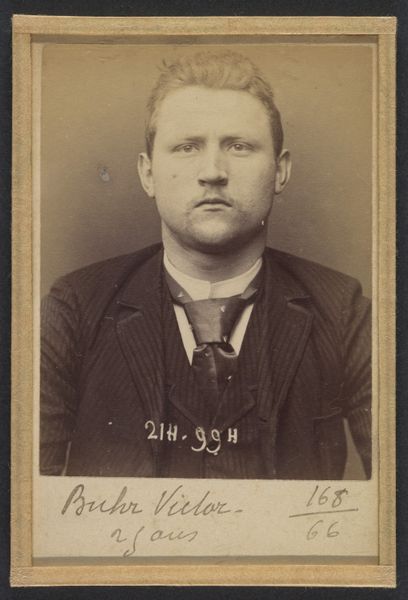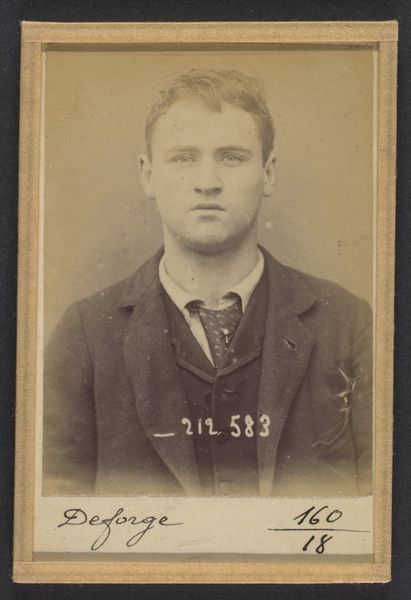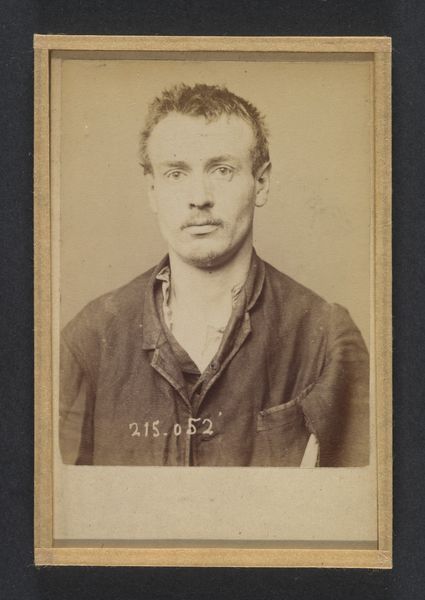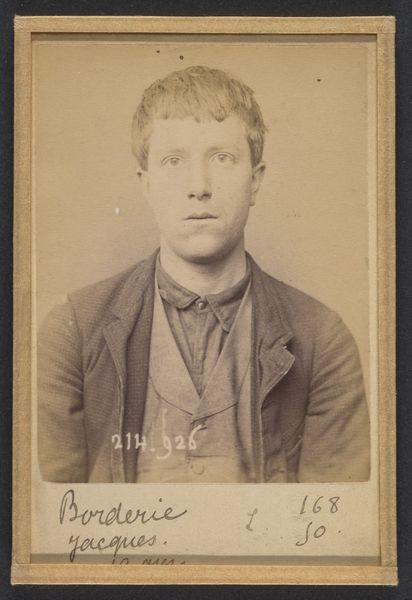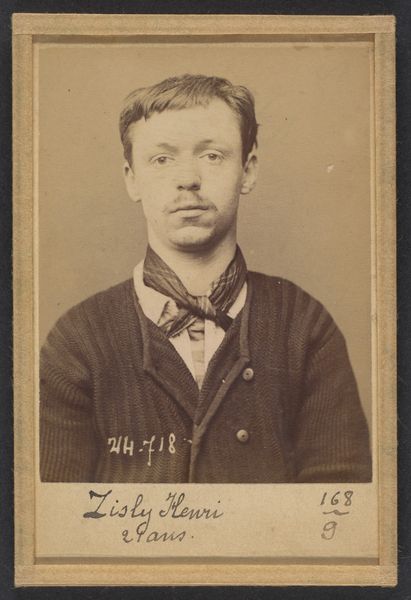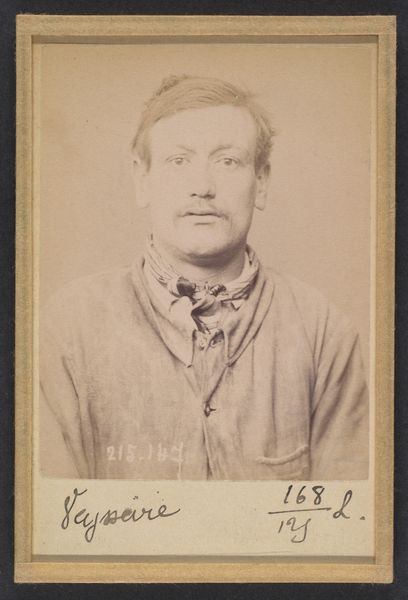
Moucheraud. Pierre, Yves. 27 ans, né à Paris IVe. Imprimeur. Anarchiste. 4/3/94. 1894
0:00
0:00
photography
#
portrait
#
portrait
#
street-photography
#
photography
#
poster
Dimensions: 10.5 x 7 x 0.5 cm (4 1/8 x 2 3/4 x 3/16 in.) each
Copyright: Public Domain
Curator: This is an arresting photograph titled "Moucheraud. Pierre, Yves. 27 ans, né à Paris IVe. Imprimeur. Anarchiste. 4/3/94.” created in 1894 by Alphonse Bertillon, now in the collection of the Metropolitan Museum. Editor: The pallid tone and stark directness are striking; there’s an unvarnished quality that feels less like a portrait and more like… evidence. Curator: Precisely. Bertillon was the head of the criminal identification division in Paris. He pioneered anthropometry, a system of identifying individuals based on their physical measurements. This image is part of that archive. Editor: So, what we are seeing isn’t just a face but a compendium of signs: the numerical markings, the inscription noting his name, age, profession – even ‘anarchiste.’ These identifiers act as potent cultural symbols. It speaks to a fear of social disruption, classifying and containing those deemed threats. Curator: Indeed, look at the even lighting and the rigorously frontal pose. Bertillon wasn't interested in aesthetics, he cared about the precise recording of quantifiable details. The subject’s clothing is also important: its materiality tells us a lot. Editor: The man’s simple collared jacket underscores his working-class status and the barest hint of stubble shadows his face, conveying a weariness that adds depth to our interpretation. Curator: Note also how the subject's gaze is carefully composed; averted slightly as a symbol of the "criminal". Editor: But within that intentionality, the human element bleeds through. Look at the slight unevenness of his eyes or the subtly apprehensive expression. These details humanize him beyond just an "anarchiste". It poses a tension between objectification and our inherent human empathy. Curator: Perhaps the success of the portrait, despite its lack of artistry, arises from our inability to see individuals as reducible to mere data points, in their own materiality and otherwise. Editor: In a world obsessed with easy answers and quick classifications, perhaps this unsettling image reminds us to confront uncomfortable truths and grapple with inherent complexities, a mirror to our own humanity in ways that linger long after we have viewed it.
Comments
No comments
Be the first to comment and join the conversation on the ultimate creative platform.

